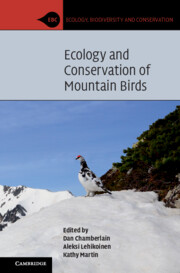Mountainous regions host globally unique biodiversity, but face growing threats from climate and land-use change. The Alps stand out as a key mountain range in Europe, where the ski industry is extensive and impacts ecosystems and their associated biodiversity. However, climate change is projected to reduce natural snow precipitation, thus understanding snow dynamics and the ski industry’s role is crucial for developing effective conservation strategies. Ski-piste creation generally has detrimental consequences for mountain biodiversity, yet pistes often retain substantial snow throughout spring that, when melting, may create favourable foraging conditions for mountain birds. This study investigates whether ski-pistes provide suitable foraging habitat and explores their broader importance for mountain avifauna. Field surveys in spring 2023 in the western Italian Alps recorded 17 bird species using the melting snow on ski-pistes as a foraging habitat. Snow presence was a significant factor influencing bird presence. Birds systematically selected areas with intermediate snow cover interspersed with muddy patches, a microhabitat that likely has a high availability of invertebrate prey emerging from the soil. Given that snow is retained on ski-pistes for longer than on the surrounding habitat, the pistes may represent a useful source of food for mountain birds in spring. However, this needs to be considered in relation to the negative impacts of skiing on alpine biodiversity, which may include a likely increased reliance on artificial snow in response to the projected decline in natural snow precipitation under climate change. Understanding these effects is essential to ensure that future conservation strategies support mountain bird communities without exacerbating the environmental costs associated with artificial snow production.
